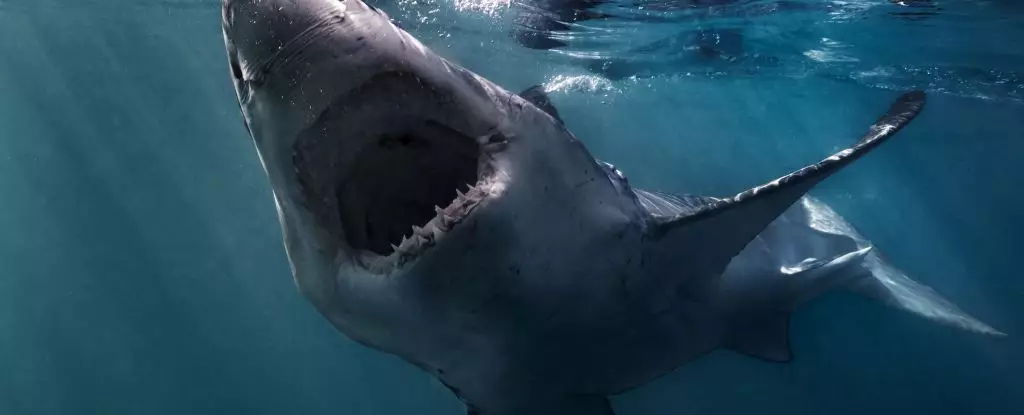The loss of a pregnant porbeagle due to a fatal encounter with another shark has been unveiled through meticulous scientific investigation in the waters of Bermuda. The distressing incident only came to light thanks to a satellite tag that had been affixed to the porbeagle. The disturbing temperature data retrieved from the tag led to a singular conclusion that left marine biologist Brooke Anderson in disbelief at the grim fate that had befallen the pregnant female porbeagle. The evidence overwhelmingly pointed towards the fact that the porbeagle had been consumed by a larger shark, a scenario that Anderson found hard to digest despite her efforts to consider alternative possibilities.
Porbeagles, scientifically known as Lamna nasus, are sizeable mackerel sharks that are found scattered across the globe; however, their population numbers are dwindling at an alarming rate. These majestic creatures, which can reach lengths of up to 3.7 meters and weigh about 230 kilograms, are susceptible to multiple threats. Porbeagles are frequently sought after in recreational and commercial fishing activities, making them prime targets for overexploitation. Additionally, they often fall victim to bycatch during fishing operations, exacerbating their already precarious situation. The reproductive cycle of porbeagles is quite slow, with females reaching reproductive maturity at around 13 years of age and producing litters of three to four pups every one to two years. This prolonged reproductive process renders them especially prone to population decline, particularly when faced with various challenges in their environment.
To safeguard these vulnerable marine creatures, Anderson and her research team commenced monitoring porbeagles using sophisticated satellite tags that track the sharks’ movements and behaviors. The pop-off tags utilized in the study capture vital information such as water temperature, depth, and approximate location for a specific duration before detaching from the shark and floating to the water’s surface where they transmit the stored data to awaiting scientists. Moreover, a fin-mounted tag on the shark provides more precise location data when the fin breaches the ocean surface. The pregnant porbeagle, measuring 2.23 meters, was tagged on October 28, 2020. Subsequently, on April 3, 2021, the researchers began receiving data from the pop-off tag, which revealed an anomalous pattern.
The satellite data indicated that until March 24, 2021, the porbeagle had been exhibiting normal behavior, with regular dives into the North Atlantic Ocean at varying depths and temperatures. However, on March 24, the temperature data registered a significant increase of approximately 5 degrees Celsius, which hinted at an ominous turn of events. Anderson and her team deduced that the porbeagle had most likely fallen prey to a predator, potentially a white shark or a shortfin mako, both of which possess some endothermic characteristics. The timeline of events strongly suggested that the tag had spent some time in the predator’s digestive system before being expelled and floating to the ocean’s surface where it began transmitting data after 3.5 days. The mounting evidence pointed towards predation as the most plausible fate that had befallen the pregnant porbeagle.
The discovery of this unusual encounter has shed light on the lesser-known phenomenon of large sharks preying on each other, particularly in this instance involving a pregnant porbeagle. The loss of multiple sharks in a single incident underscores the potential stressors that predatory encounters pose to the porbeagle population, warranting further investigation and conservation efforts. Anderson emphasizes that such behaviors are not new but rather hitherto undiscovered due to technological limitations. By expanding the scope of tagging initiatives to include more porbeagles and other shark species, researchers hope to unravel the mysteries of these elusive marine creatures and gain insights into the frequency and impact of such interactions on the porbeagle population. The evolution of satellite tagging technologies has played a pivotal role in unraveling the enigmatic behaviors of highly mobile sharks, enabling scientists to explore uncharted territories and uncover novel behavioral patterns in marine species.


Leave a Reply